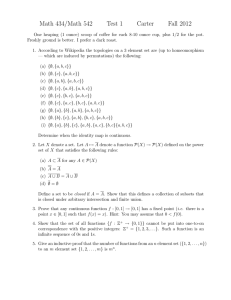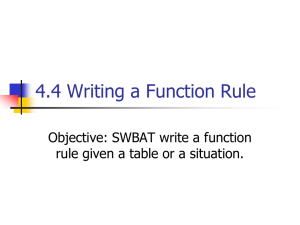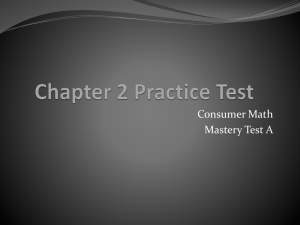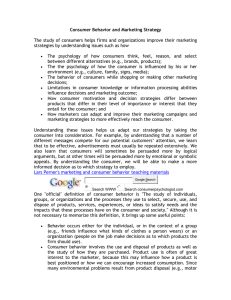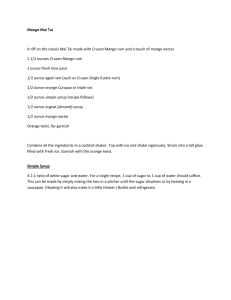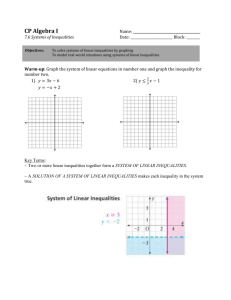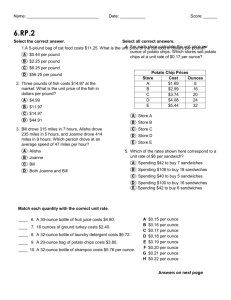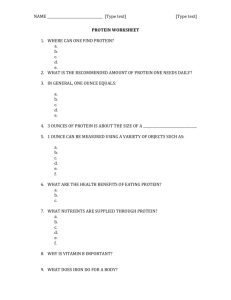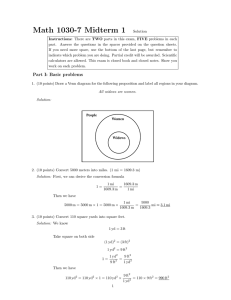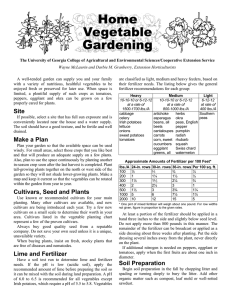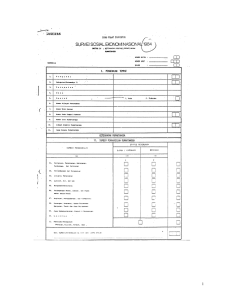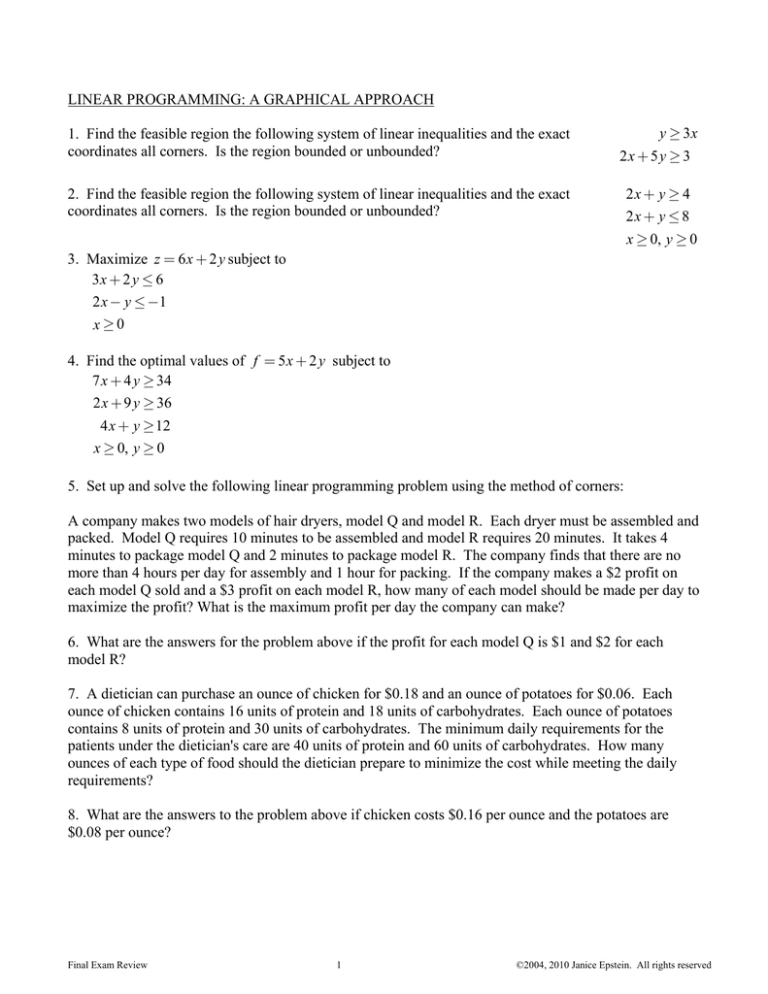
LINEAR PROGRAMMING: A GRAPHICAL APPROACH
1. Find the feasible region the following system of linear inequalities and the exact
coordinates all corners. Is the region bounded or unbounded?
y ³ 3x
2x + 5 y ³ 3
2. Find the feasible region the following system of linear inequalities and the exact
coordinates all corners. Is the region bounded or unbounded?
2x + y ³ 4
2x + y £ 8
x ³ 0, y ³ 0
3. Maximize z = 6 x + 2 y subject to
3x + 2 y £ 6
2 x - y £ -1
x³0
4. Find the optimal values of f = 5 x + 2 y subject to
7 x + 4 y ³ 34
2 x + 9 y ³ 36
4 x + y ³ 12
x ³ 0, y ³ 0
5. Set up and solve the following linear programming problem using the method of corners:
A company makes two models of hair dryers, model Q and model R. Each dryer must be assembled and
packed. Model Q requires 10 minutes to be assembled and model R requires 20 minutes. It takes 4
minutes to package model Q and 2 minutes to package model R. The company finds that there are no
more than 4 hours per day for assembly and 1 hour for packing. If the company makes a $2 profit on
each model Q sold and a $3 profit on each model R, how many of each model should be made per day to
maximize the profit? What is the maximum profit per day the company can make?
6. What are the answers for the problem above if the profit for each model Q is $1 and $2 for each
model R?
7. A dietician can purchase an ounce of chicken for $0.18 and an ounce of potatoes for $0.06. Each
ounce of chicken contains 16 units of protein and 18 units of carbohydrates. Each ounce of potatoes
contains 8 units of protein and 30 units of carbohydrates. The minimum daily requirements for the
patients under the dietician's care are 40 units of protein and 60 units of carbohydrates. How many
ounces of each type of food should the dietician prepare to minimize the cost while meeting the daily
requirements?
8. What are the answers to the problem above if chicken costs $0.16 per ounce and the potatoes are
$0.08 per ounce?
Final Exam Review
1
©2004, 2010 Janice Epstein. All rights reserved

